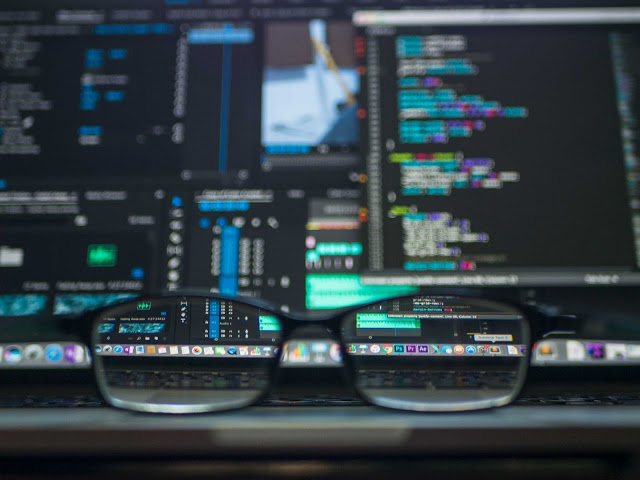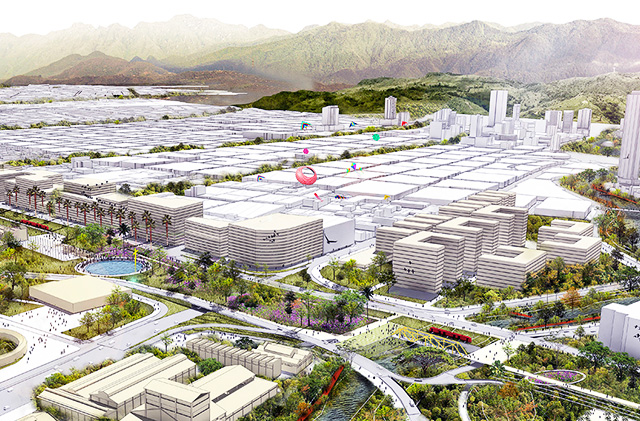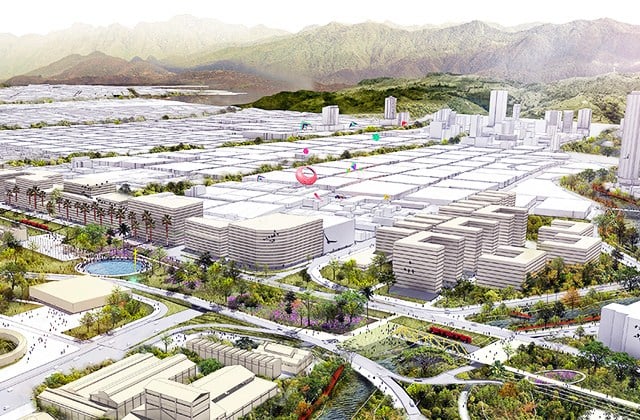 |
| Figure 2 : Security concerns must be contained as they multiply as Big Data expands. |
Don’t miss out on a single post. Subscribe to LUCA Data Speaks.

 |
| Figure 2 : Security concerns must be contained as they multiply as Big Data expands. |
Don’t miss out on a single post. Subscribe to LUCA Data Speaks.

Understanding the profile of clients, and their wants and needs, is vital for any brand. Companies that know what their target audience wants will be able to reach their clients more easily. By basing themselves on data and information acquired about the profile of consumers, brands are able to design the necesssary strategies in order to achieve their goals more successfully. But, how does one gather, order, analyze and extract value from all this information? In this post, we share with you one example, that of the recent collaboration between LUCA and La Vaguada Shopping Center in Madrid.
LUCA has worked alongside La Vaguada in a project with the aim of better understanding its clients and the challenges it faces as a shopping center, largely due to the arrival of online shopping.

5. Finally, on a slightly more serious note: World Health Day: Using Big Data to address depression. Once again illustrating the diverse possiblities of data science, this post talks about depression and how modern technologies can hold the key to tackling this widespread problem.
Don’t miss out on a single post. Subscribe to LUCA Data Speaks.

Hi Hacker!

Connected vehicles are increasingly becoming reality, and in fact, you may have even had the chance to drive one. A study carried out by PwC entitled The Bright Future of Connected Cars suggests that worldwide sales of connected vehicles will almost quadruple between 2015 and 2020, generating more than 110 billion euros (149 billion dollars) in revenue in the passenger segment alone.
For both business and company use, the ecosystem of products and services around these vehicles is growing and shifting our conventional idea of driving thanks to the endless possibilities offered by this industry.
In this sense, on a professional level, open platforms are already revolutionising fleet management capacities using IoT as a “hub” for the vehicle, with functionalities which go far beyond basic tracking by GPS, such as with leasing and rental services, which are becoming more popular, the proactive maintenance of the vehicle fleet.
So what benefits are there? Why does the transformation towards smart vehicles seem unstoppable?
One of the cornerstones to explaining the benefits of this innovation in transport is directly related to the capacity to generate and store a vast amount of data, which are analysed thanks to Big Data. Access to such a huge volume of analysed information brings improvements and new possibilities. Organisations that are capable of understanding the value of these data for their clients and society at large will have a unique competitive advantage.
Engineering companies like Geotab develop technology which allows the automation of many driving related processes, improving critical factors like transport efficiency, sustainability and productivity. This technology allows drivers to determine not only the quickest route and most detailed itinerary but also to monitor fuel consumption and CO2 emissions. Fleet management solutions already provide detailed information on the automobile’s performance and automatically send this information to insurance companies and fleet managers.
Most importantly, the new IoT technologies help bring down the number of accidents: driver assistance and safety systems have advanced features like seat belt detection, collision warning, and accident notifications. Additionally, systems already exist which monitor vital functions of drivers like their pulse, fatigue symptoms and send alerts about possible problems.
As a whole, this array of new features will largely expand the capacities of connected vehicles in the future, transforming not only the way we drive but how we buy and maintain vehicles, and also how manufacturers sell them. Gathering smart data offers companies and drivers a vast trove of resources and opportunities as they grow, expand and increasingly connect with the IoT.
Almost all smart cities have one or several of the following objectives:
1. Safety: Reducing accidents, injuries, fatalities and EMS response times.
2. Sustainability: Reducing CO2 emissions and other pollutants/contaminants.
3. Efficiency: Improving city operations.
4. Equality: Creating more opportunities in under-privileged urban areas.
5. Engagement: Improving citizen engagement and social interactions.
In this sense, remote devices are becoming an important part of the smart city movement. Today’s solutions allow road and highway conditions to be analysed, along with the traffic flow, dangerous intersections and roadways, the impact of weather conditions, and the planning of the infrastructure needed to charge electric vehicles, which are increasing in number. The trend shows that remote devices and IoT will be even further integrated into the network of smart cities and will provide us with countless services because they are a key element in the urban planning of the future.
For all of these reasons, there is no doubt that connected vehicles are a huge improvement to our mobility, but they are much more than that: they are also going to transform our cities and our lives before we even realise it.
There is a lot of data about various aspects of this time of the year. For example, Forbes and Statista created an infographic based on Washington Post Data on some Christmas facts. Did you know that the Asche County in North Carolina produces the most Christmas trees? An outstanding number of 1,979,835 pine trees! North America’s all time favorite album is “Miracles”, The Holiday Album by Kenny G, with 7.31 million units sold. And of course, the most successful Christmas Movie is “How the Grinch stole Christmas” with 260 million dollars earned at the box office.
| Figure 2 : British population will spend 61.000€ per person throughout their lives on Christmas expenses. |
Don’t miss out on a single post. Subscribe to LUCA Data Speaks.

Once upon a time, there was a ubiquitous mobile technology, which earned a high level of subscriber trust, and did this with just only 160 characters. This fairy tale story happens to be true and it just celebrated its 25th birthday this week, What am I referring to here?
However just like many products and services that came before it, SMS is about to get a serious (and badly needed) makeover. SMS 2.0 or Rich Communication Services (RCS) has finally, after many failed attempts made it to the mainstream, and is planning to come to your android handset in one form or another in the next 12 to 18 months.
 |
| Figure 1 : Will SMS 2.0 have a place in today’s world?
|
Don’t miss out on a single post. Subscribe to LUCA Data Speaks.

In 2017, we have seen the rise of technologies associated with Big Data, the popularization of VR and the emergence of autonomous cars. But much still remains to be seen. The general outlook seems to be taking shape around certain applications and more specific technological solutions such as eSIM, the IoT based on Blockchain and Edge Solutions. These are the trends that will drive the direction of the development of connectivity in 2018.
eSIM is the future of devices, especially in telephones, plus it greatly facilitates the adoption of cellular connectivity in devices that would generally not have it, such as smartwatches and other wearables. Basically, it consists in a Subscriber Identity Module (or SIM) that can be reprogrammed remotely without the need to change it physically, which means easier management for operators from the administrative standpoint, as well as in the use of a single SKU in the manufacture of devices, which will allow for simpler traceability. This shapes the perfect scenario to see global IoT products more often. The eSIM will reach a CAGR of 26.3% between 2019 and 2025.[1] But new challenges also come with digital SIMs, such as the need for OTA (Over the Air) maintenance which allows the devices and their connectivity to be properly managed regardless of the place in the world or the environment where they are located. The first trendsetting details of eSIM operations will be seen in 2018.
According to experts, the drone services market will be worth $18.0227 billion by 2022 [2]. As more commercial drones (which can weigh between 2 and 150 kg) and their uses arrive to market, the greater concern is over not only their regulation, but also their application and technology. The year 2018 will be crucial in the development of realistic global laws on the use of these robots for all kinds of tasks, especially messaging, but also research, control, monitoring and audiovisual production.
In regulatory aspects, safety will be another key aspect of drones. Thus, cellular networks, which are safe by design, are a perfect alternative as a communications network and to control drones. In this sense, there are several lines of work coming from operators. But as mentioned above, there are still many legislative gaps to be filled before seeing many of these devices on the market.
The Edge Computing market is expected to grow from $185.8 billion in 2017 to $838.6 billion by 2022 [3]. Meanwhile, Edge Solutions for the IoT present a series of challenges related to the future of computing and scalability. They include latency, more efficient use of broadband and security. These problems will be the focus of attention of technological proposals in this coming year. Edge infrastructure brings assets back from the cloud to networks, taking advantage of cloud computing but preventing issues like bandwidths with legacy networks that can’t handle additional workloads. Edge solutions will be empowered in 2018 both technically and in terms of public attention.
To fully ensure the integrity and security of data, IoT solutions based on the Blockchain are considered one of the best options available. The maturity of the sector, in which the adoption of the Blockchain is increasingly common, will allow its management applications to be increased, such as control solutions for supply chains in the industrial sector. Communication and information will also be the focus of these applications, which estimates say will witness growth of up to $6.0766 billion in 2023 [4].
For companies, a device management system means having better control and security, as well as greater efficiency, and it lowers the chances of having a device in down time. Currently, there is a fragmentation in management protocols that hinders their proper functioning. The number of wireless M2M device connections will grow to more than 2.2 billion in 2023 [5]. The industry is adopting the Lightweight M2M protocol as a standard for this low-end. On the other hand, the more than 20 billion IoT devices expected by 2020 [6] will continue to deal with this fragmentation, which will drive the development of a standard in 2018.
LPWA technologies offer a range never before seen in other connectivity solutions. In 2016 and 2017, we have seen how they consolidated around the NB-IoT and LTE-M, allowing for the connection of billions of devices of all types at once. The number of low power wide area connections will grow to 3 billion in 2025, up from 59 million in 2016 [7], and we will start see the exponential boom of this technology in 2018.
According to estimates, Industry 4.0 is growing quickly and is expected to reach a market value of $152.31 billion by 2022 [8]. Therefore, the supply chain must adapt to the new smart solutions offered by the interconnectivity of IoT. The current industry trend is driven by that aspect, which will be able to achieve great things in the near future, taking advantage of the maturity of Artificial Intelligence.
Voice assistants have matured in the last five years until reaching a peak in their development. Now these assistants are evolving towards new assistance shares, making it possible to do things that were unthinkable just a few years ago. Right now, their application in more services and their associated technology are allowing smart assistants to be used as the only interface in a host of devices. In 2018, we will see some of the fruits of this evolution, with an increasing number of connected items handled only by voice. A CAGR of 30.45% in terms of unit shipment and revenue is expected for 2022 [9]. Their spread will also be related to financial services to provide secure services with voice authentication, beyond their application in devices targeted to end consumers.
During the past year, Big Data has become one of the clearest trends in all technology circles. In 2018, this will not decrease, but instead it will increase and move towards creating a new and broader category of IoT services for end users beyond wearables and the current Smart Home devices. Big Data analysis will open new doors to services related to connected cars, which will use massive amounts of information collected and processed in real time, as well as a host of applications related to health and emergency services provided by Smart Cities. New layers of value associated with this analysis will grow on these services. According to estimates, Big Data and Business Analytics revenues will reach $210 billion in 2020 [10], which exemplifies the growing impact of this technological concept on future scenarios.
Security is still among the top five topics when talking about the future. There will be more IoT attacks aimed not only at endpoints (devices) but also at the base (platforms and cloud). In 2018, the market related to cybersecurity will reach $149.79 billion [11], accelerated by increased global awareness, as well as by the increase in the number of attacks in recent years. Cybercriminals are always trying to uncover new security flaws, so it is important to never let your guard down. The new technologies will help increase the ways we have to deal with them effectively, which will clearly be seen in the security solutions that take advantage of Artificial Intelligence and Big Data in 2018.
[1] GmbH, finanzen net. n.d. “E-SIM Card Market, Wearable & Companion Devices, Smartphones, and Tablets & Laptops – Global Industry Analysis, Size, Share, Growth, Trends and Forecast 2017 – 2025.” Markets.businessinsider.com. Accessed November 29, 2017. http://markets.businessinsider.com/news/stocks/E-SIM-Card-Market-Wearable-Companion-Devices-Smartphones-and-Tablets-Laptops-Global-Industry-Analysis-Size-Share-Growth-Trends-and-Forecast-2017-2025-1002238335.
[2] “Drone Service Market by industry”. Markets & Markets. Accessed December 15, 2017. https://www.marketsandmarkets.com/Market-Reports/drone-services-market-80726041.html
[3] “Mobile Edge Computing Market 2017 – Global Forecast to 2022 – Rising Focus on Delivering High.” n.d. Accessed November 19, 2017. https://www.prnewswire.com/news-releases/mobile-edge-computing-market-2017—global-forecast-to-2022—rising-focus-on-delivering-high-bandwidth-and-low-latency-300503832.html.
[4] Reportlinker. n.d. “Blockchain Market: Forecast (2017 – 2023).” Accessed November 29, 2017. https://www.prnewswire.com/news-releases/blockchain-market-forecast-2017—2023-300559779.html.
[5] “‘Lightweight M2M’: Enabling Device Management and Applications for the Internet of Things.” n.d. Accessed November 29, 2017. http://theinternetofthings.report/Resources/Whitepapers/c9b5e66c-ffb9-4011-8578-49bc01075085_1_28701-FGB101973_EN_B_PDFV1R1.pdf.
[6] “Gartner Says 8.4 Billion Connected.” n.d. Accessed November 29, 2017. https://www.gartner.com/newsroom/id/3598917.
[7] “LPWA Market Forecast: Connections Will Grow by 3 Billion in Under Ten Years.” n.d. Internet of Things (blog). Accessed November 29, 2017. https://www.gsma.com/iot/news/lpwa-market-forecast-connections-will-grow-3-billion-ten-years/.
[8] “Industry 4.0 Market 2017 – Global Forecast to 2022: Industrial Robotics, Cyber Security, IofT, 3D Printing, Advanced Human-Machine Interface, Big Data, Augmented Reality & VR, AI – Research and Markets.” 2017. May 26, 2017. http://www.businesswire.com/news/home/20170526005426/en/Industry-4.0-Market-2017—Global-Forecast.
[9] “Global Smart Voice Assistant Speaker Market – Strategic Assessment & Forecasts to 2022 – Research and Markets.” 2017. September 8, 2017. http://www.businesswire.com/news/home/20170908005576/en/Global-Smart-Voice-Assistant-Speaker-Market–.
[10] “Big Data and Business Analytics Revenues Forecast to Reach $150.8 Billion This Year, Led by Banking and Manufacturing Investments, According to IDC.” n.d. www.idc.com. Accessed November 29, 2017. http://www.idc.com/getdoc.jsp?containerId=prUS42371417.
[11] “Global Cyber Security Market Forecast 2016-2021 | Statistic.” Statista. Accessed November 29, 2017. https://www.statista.com/statistics/595182/worldwide-security-as-a-service-market-size/.

 |
| Figure 1 : An artistic prediciton of how Cali’s green corridor will look once completed. |
The project was the result of an international agreement between the Foreign Minister of the UK, the consultancy firm ATKINS, FDI Pacífico, the city of Cali and Telefonica Colombia. Telefonica contributed to the urban planning through the use of mobile data as an instrument for identifying and evaluating opportunities. In particular, they analyzed data obtained by LUCA Transit, which include the number of trips carried out in the area of study and the distribution of these movements by hour and purpose.
Don’t miss out on a single post. Subscribe to LUCA Data Speaks.